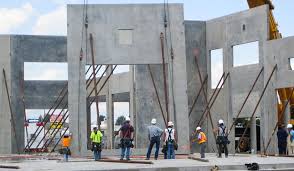 In my previous post, I touched on some of the important progress update items we review and analyze.
In my previous post, I touched on some of the important progress update items we review and analyze.
I will now discuss the process for Actual Start and Finish Dates and partial progress of work in progress. I will not hit this too hard as most everyone understands this process and the process varies from industry to industry. But the basics are very similar.
When the project is large, or smaller, and there is a full-time Owner’s Scheduler on the project, the Owner’s scheduler can periodically walk the project with various team members to validate Actual Start and Finish Dates. More often, for me as a Schedule Consultant, I rely on that verification by the Owner’s Representative on site. It’s a standard part of developing the “pencil copy” pay application or draft invoice.
However, what often happens is the review is overly concerned with determining what percent complete work in progress is. While this is important, getting the accurate Actual Start and Finish Dates is critical as well.
When working with the contractor to determine the progress for a performance period, we typically walk the project and either agree or disagree with their assessment. We should also be reviewing our daily reports for the actual dates.
Back when I was an inspector, I liked to keep a copy of the three week look ahead schedule with me so I could jot down an actual date when I came across it in the field. This allowed me to write it and forget it so I could focus on other matters. It was also very helpful when reviewing the “pencil copy” pay application.
Coming to the agreement of percent complete for work in progress was not too difficult, but getting the expected Finish Date was. We really had to discuss the performance of that work individually, decide if the progress was improving, had some delay or was simply not important enough today to throw resources at. In any event, the expected Finish Date for an in-progress activity is crucial to determining what the status is and how the project proceeds from this update. It needs to be as accurate as possible. If we bag it, we can force it Critical or Near Critical resulting in an erroneous shift in resources. If we only rely on the best-case scenario, we may not allow the focus necessary to recover this next update period.
The owner really needs to have someone in the field, daily, keeping up with the actual and planned progress. The rest of the schedule progress update is based on this data. Any revisions and planning done by the contractor to recover time lost or shift resources to maintain schedule are dependent on this information being accurate. Any potential delay or change order issues are also affected by this information. This information sets the status of the project at the time of the progress update. This determines the current Critical and Near Critical Path(s).
I’m sure many of you have comments or additional insight into this subject. Please share!
I’d love to hear what you think!
Please visit https://conschmanservices.com to learn more about Construction and Schedule Management Services, LLC
Please visit my LinkedIn account to learn more about me.
Please visit my “The Blue Book” ProView.
Paul Epperson CCM, PMP, PSP, PMI-SP
 In my previous posts, I described some basic schedule quality validation suggestions.
In my previous posts, I described some basic schedule quality validation suggestions. Do you diligently keep track of the work on your project’s critical path?
Do you diligently keep track of the work on your project’s critical path? You have a
You have a  You have created your project’s
You have created your project’s